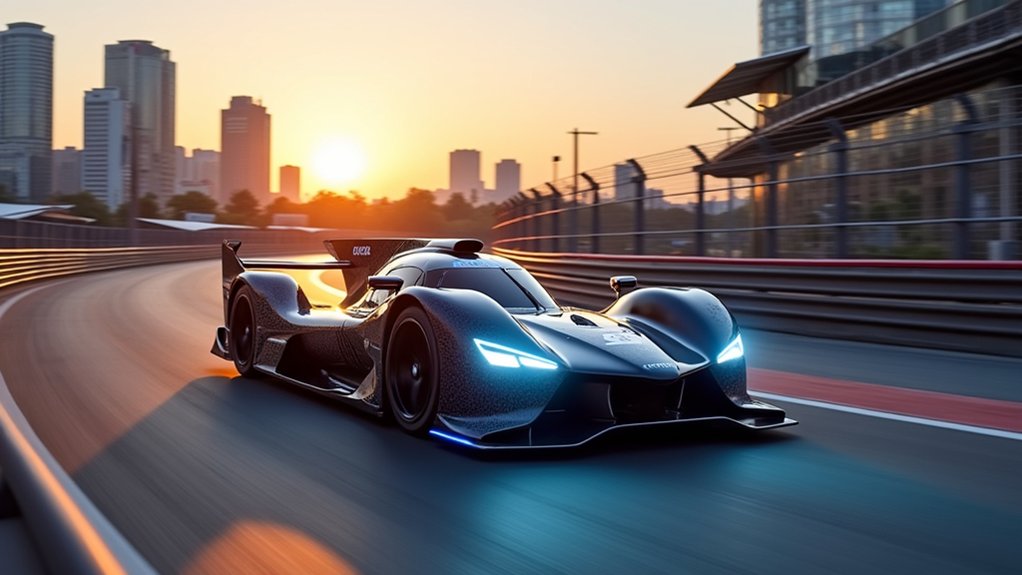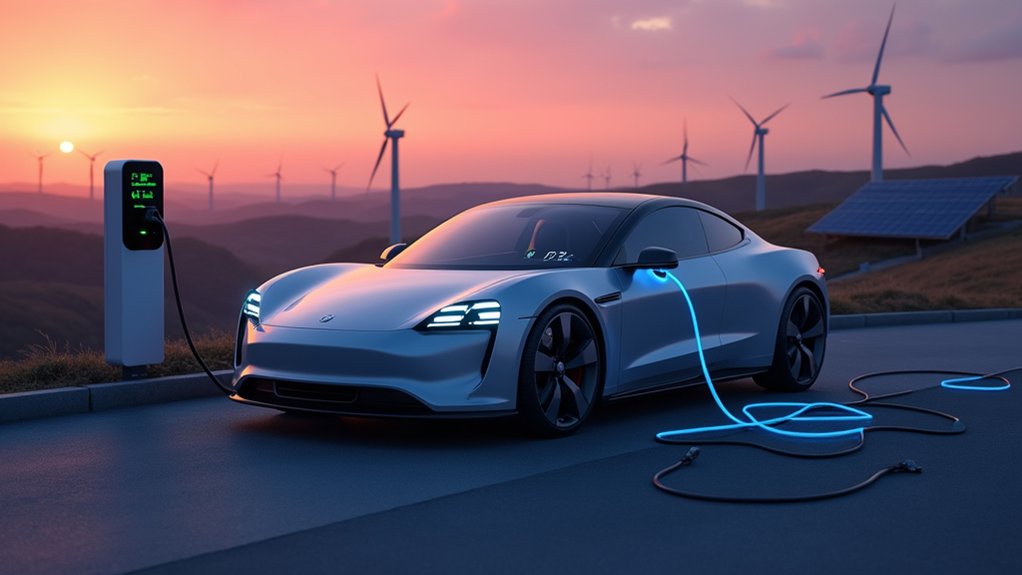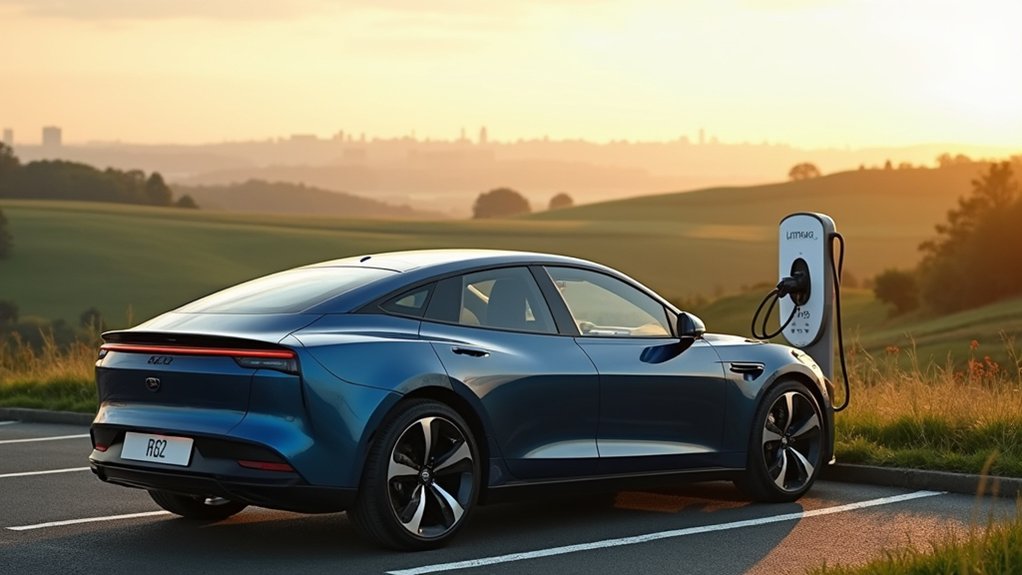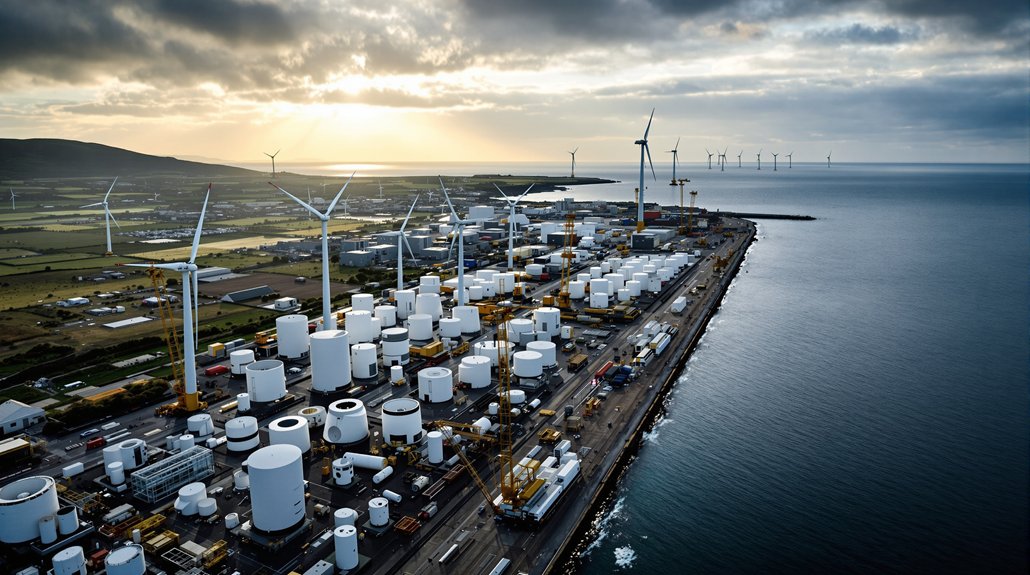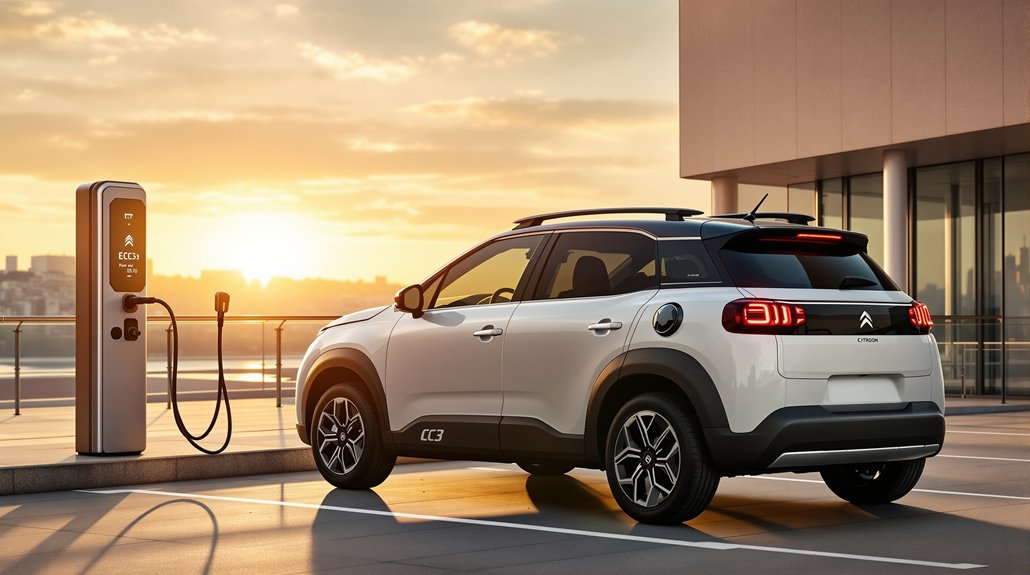Electric vehicle charging operates across three primary levels: Level 1 (120V), Level 2 (240V), and Level 3 DC Fast Charging, each offering progressively faster charging capabilities. Modern EVs typically achieve ideal charging efficiency between 20-80% battery capacity, utilizing standardized connections like CCS, CHAdeMO, or Tesla-specific interfaces. While home charging remains the primary solution, expanding public infrastructure and workplace stations are rapidly transforming the charging landscape. The complexities of EV charging reveal fascinating technical innovations worth exploring.

How does the complex ecosystem of electric vehicle charging actually work? At its core, EV charging involves transferring electrical energy from the power grid to a vehicle’s battery through various charging systems. These systems operate using either alternating current (AC) or direct current (DC), with DC offering considerably faster charging capabilities by bypassing the vehicle’s onboard converter.
The charging infrastructure is built around three primary levels of charging power. Level 1 utilizes standard 120V outlets, delivering a modest 3-5 miles of range per hour – suitable for overnight charging at home. Level 2 charging, operating at 240V, provides markedly faster charging rates of 10-60 miles per hour, making it ideal for both residential and public installations. Level 3 DC fast charging represents the pinnacle of current charging technology, capable of adding 60-100 miles of range in just 20 minutes. The most efficient charging occurs during the constant current phase, typically between 20-80% of the battery’s capacity. By 2030, most new electric vehicles are expected to achieve 300-mile range on a single charge.
Critical components in the charging ecosystem include the charging station’s power delivery system, connection interfaces (CCS, CHAdeMO, or Tesla-specific), and smart charging capabilities. Modern charging stations increasingly incorporate advanced features like real-time monitoring, load management, and mobile app integration. The efficiency of power delivery depends heavily on factors such as battery chemistry, ambient temperature, and the vehicle’s onboard charging capabilities. Various charging networks and mobile applications help drivers locate and access available charging stations.
The charging infrastructure landscape continues to evolve rapidly. While home charging remains the primary option for most EV owners, workplace charging stations are becoming increasingly prevalent. Public charging networks are expanding, though rural areas still face coverage challenges. The disparity between urban and rural charging infrastructure remains a considerable hurdle in widespread EV adoption.
From an economic perspective, electricity costs for EV charging typically represent substantial savings compared to traditional fuel expenses. However, charging speeds and accessibility vary considerably based on location and charger type. The charging ecosystem’s complexity requires careful consideration of factors like charging habits, available infrastructure, and vehicle compatibility to optimize the EV ownership experience.
Frequently Asked Questions
How Long Will My EV Battery Last Before Needing Replacement?
Modern EV batteries typically last 15-20 years or 200,000-280,000 miles before requiring replacement, with an annual capacity degradation rate of 1.8-2.3%.
Battery longevity depends heavily on charging habits, temperature exposure, and driving patterns. Following manufacturer guidelines, including maintaining charge levels between 20-80% and limiting DC fast charging, can greatly extend battery life.
Federal law mandates minimum 8-year/100,000-mile battery warranties.
Can I Charge My Electric Vehicle During a Thunderstorm?
Modern EVs can be safely charged during thunderstorms due to extensive weatherproofing and multiple safety systems.
The charging equipment features IP-rated weatherproof connectors, ground-fault protection, and surge-prevention technology.
While technically safe, it’s recommended to delay charging during severe lightning activity as a precautionary measure.
If charging must continue, using stations with built-in surge protection offers additional security against power fluctuations.
Will Frequent DC Fast Charging Damage My EV Battery?
Frequent DC fast charging can accelerate EV battery degradation through increased heat generation and chemical stress.
Studies show exclusive DC fast charging may increase degradation rates by up to 16% compared to AC charging.
However, modern EVs incorporate advanced thermal management systems to minimize damage.
Using fast charging occasionally, limiting charges to 80-90% capacity, and alternating with slower AC charging helps preserve battery health long-term.
What Happens if My EV Runs Out of Power on the Road?
When an EV depletes its main battery, it typically enters a reserve power mode for approximately 8 km of travel.
Once exhausted, the vehicle shifts to “turtle mode,” limiting speed to 30 km/h.
Complete power loss requires immediate action: safely pull over, activate hazards, and contact roadside assistance.
Standard towing can damage electrical systems, so flatbed transport is essential.
Emergency charging packs can provide enough power to reach the nearest station.
Can I Use My Home Solar Panels to Charge My Electric Car?
Yes, home solar panels can effectively charge an electric vehicle through a properly installed system.
The setup requires solar panels, an inverter to convert DC to AC power, and a Level 2 EV charger. This combination typically costs $0.06 per kWh, markedly less than grid electricity.
Modern integrated systems can intelligently prioritize solar power for charging while maintaining household power needs.


